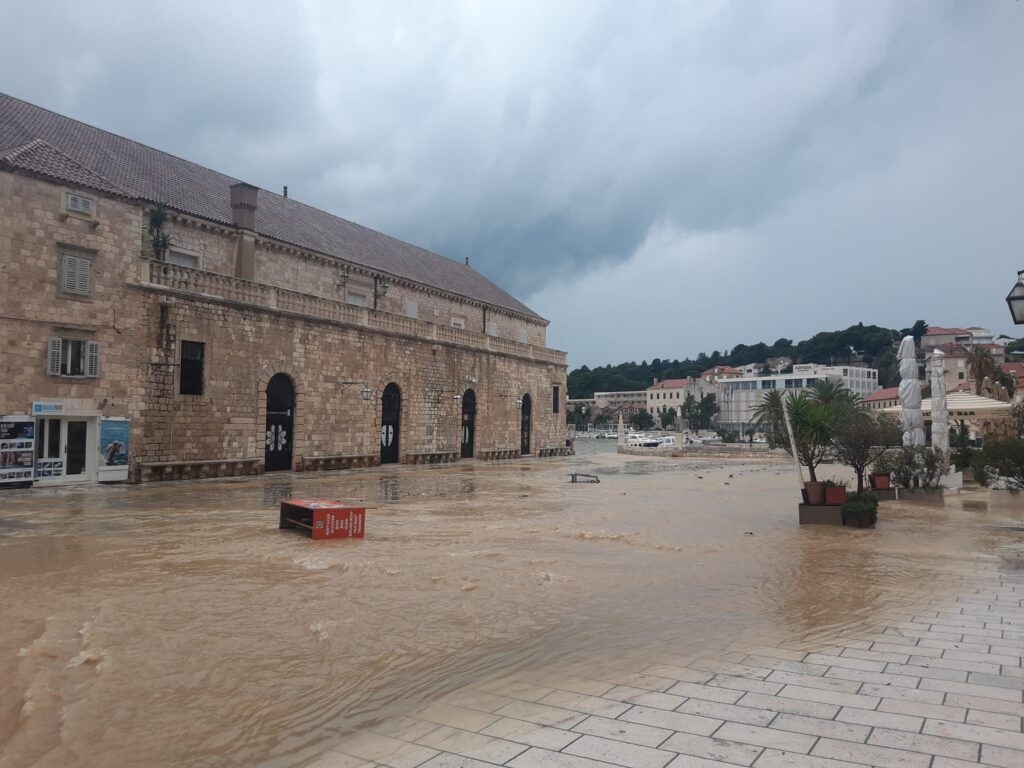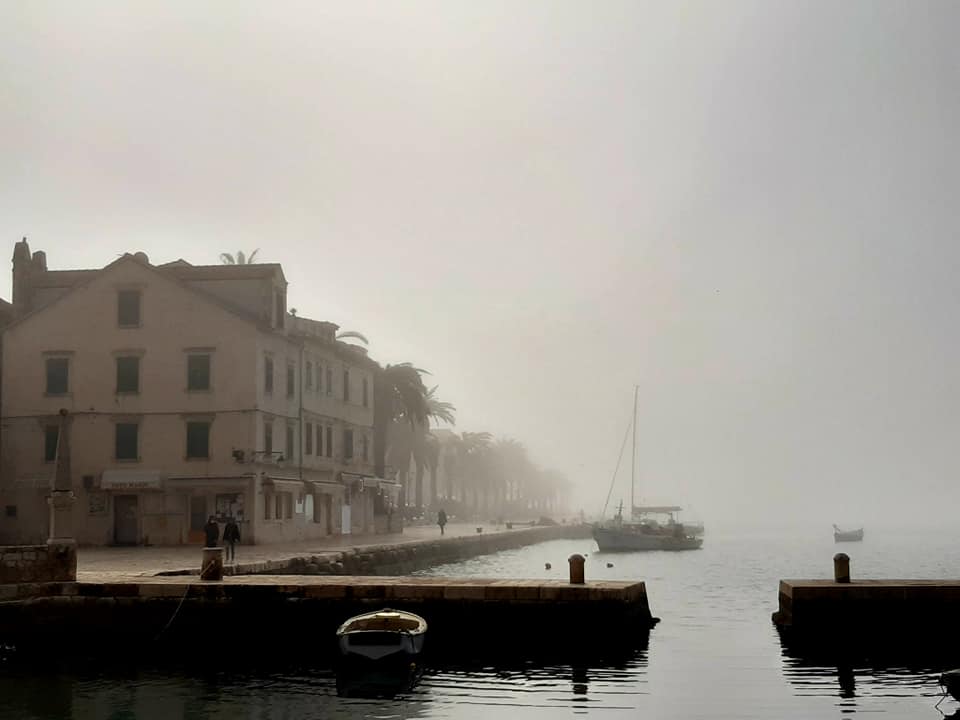To be able to understand the climate change, it is necessary to monitor and measure data in one area continuously over a period of thirty years.
Since the continuous weather measurements at the global level started approximately 150 years ago, the island of Hvar is one of the lucky places in this respect, and we can learn about the climate in the past only on the basis of archival sources and records, it is difficult to give a univocal answer to many questions and challenges related to the climate change.

Experienced meteorologists have been observing the trend temperature increase in the town of Hvar from the beginning of the 1990s until today. We can all feel it: the summer months are breaking temperature records, with the so-called tropical nights that disturb the normal sleep. Sudden and short summer storms and much-needed, refreshing evening breezes have become a thing of the past. Long periods of drought make things difficult for farmers. This year’s olive harvest is more exhausting than in previous years, because the olives are rather small and difficult to pick. However the oil yield is approximately at the average level.
In 21 years of this century, more than 10 of them were extremely hot. In the period 1981 through 2017, the annual mean temperature increased by 3.8°C. As we already mentioned, the observed warming also affected the traditional agricultural varieties on our island. In the period 1961 through 1990 the ripening of plavac mali grapes lasted 38 days on average, and in the period 1987 through 2016 the ripening period shortened to only 20 days. It has been observed that in the past thirty years, blossoming, and consequently, picking of olives has started earlier than before. It happens more frequently that there is no time distance between harvesting of grapes (jematva) and beginning of the season of picking of olives. In the period 1961 through 1990 the olive picking season would start on average on November 13, and in the period 1987 through 2016 the start moved to the beginning of November or mid-October. Besides the fact that the impact of climate change will not be uniform for all crops in the future, there is also the risk of forest fires that is increasing.
The modern science increasingly turns to microclimate measurements, which are of great importance for creating or improving the quality of life in the existing urban or rural environments. We are witnessing how the new parts of the town of Hvar, and island bays that have been hidden and unknown to the public until recently, have no green areas. They are covered in concrete, without any plan and, very often, even illegally. As a consequence, life there in the summer time becomes unbearable and they become the places with the increased risk of fire. Furthermore, bearing in mind the climate change in the future, many tourist places, Hvar included, will become too warm in the peak season (July and August). So, it seems that we will be forced to create strategies for the pre-season and post-season, against our will, while the usual peak of the season will be much less burdened with tourists. The climate change will perhaps over time reverse the tourist season and return it to its origin, as in e.g. 1868, when the Hygienic Society was founded. The peak of the season then was from October to May.
An important part of the damage control strategy is raising the awareness of every citizen about the issue and a smart attitude of respect towards nature and the environment. Maybe we cannot change the world, but we can definitely help preserve our little piece of it.
Rear more about Croatia.

